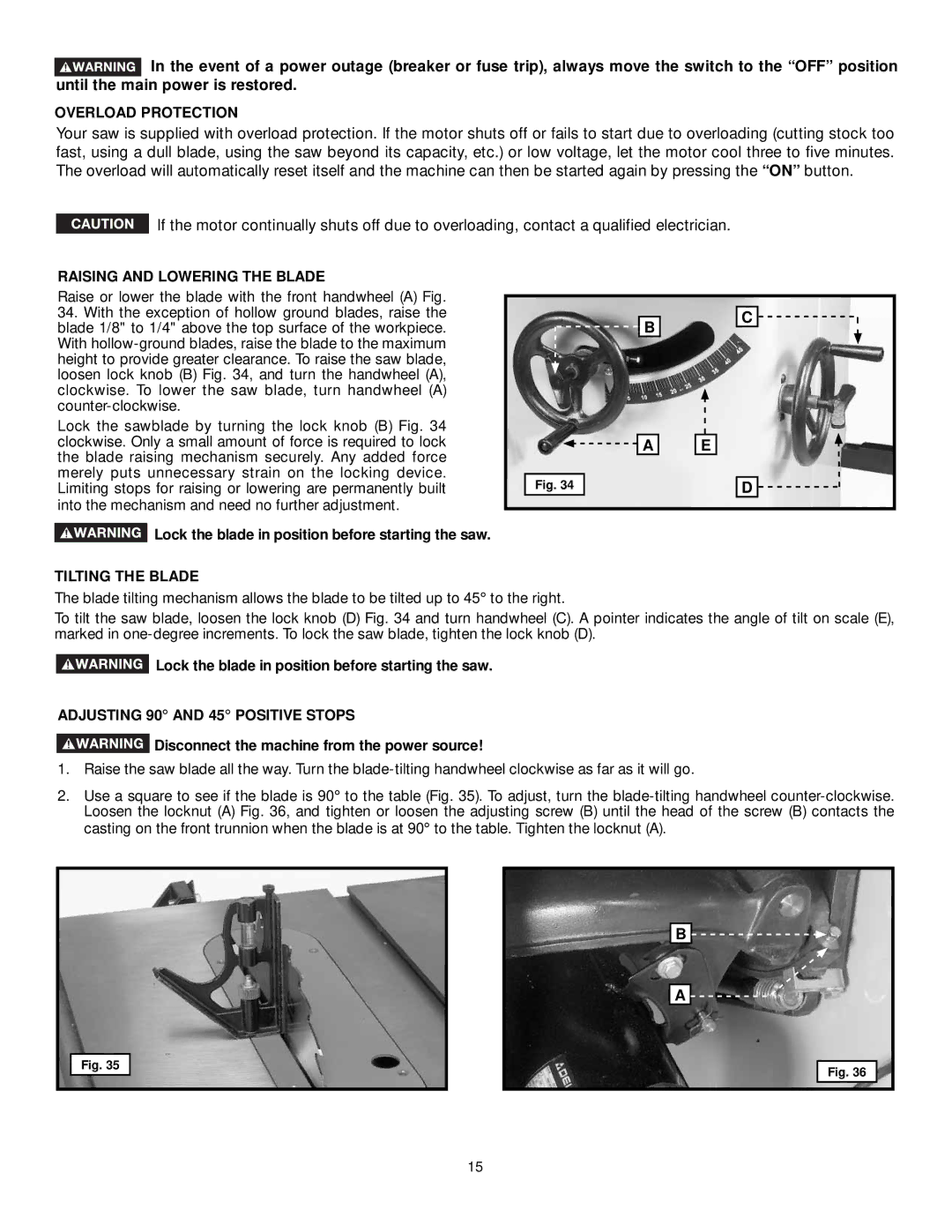
![]() In the event of a power outage (breaker or fuse trip), always move the switch to the “OFF” position until the main power is restored.
In the event of a power outage (breaker or fuse trip), always move the switch to the “OFF” position until the main power is restored.
OVERLOAD PROTECTION
Your saw is supplied with overload protection. If the motor shuts off or fails to start due to overloading (cutting stock too fast, using a dull blade, using the saw beyond its capacity, etc.) or low voltage, let the motor cool three to five minutes. The overload will automatically reset itself and the machine can then be started again by pressing the “ON” button.
![]() If the motor continually shuts off due to overloading, contact a qualified electrician.
If the motor continually shuts off due to overloading, contact a qualified electrician.
RAISING AND LOWERING THE BLADE
Raise or lower the blade with the front handwheel (A) Fig.
34.With the exception of hollow ground blades, raise the blade 1/8" to 1/4" above the top surface of the workpiece. With
Lock the sawblade by turning the lock knob (B) Fig. 34 clockwise. Only a small amount of force is required to lock the blade raising mechanism securely. Any added force merely puts unnecessary strain on the locking device. Limiting stops for raising or lowering are permanently built into the mechanism and need no further adjustment.
![]() Lock the blade in position before starting the saw.
Lock the blade in position before starting the saw.
TILTING THE BLADE
![]()
![]() B
B
A
Fig. 34
C ![]()
![]()
![]()
E
D ![]()
![]()
The blade tilting mechanism allows the blade to be tilted up to 45° to the right.
To tilt the saw blade, loosen the lock knob (D) Fig. 34 and turn handwheel (C). A pointer indicates the angle of tilt on scale (E), marked in
![]() Lock the blade in position before starting the saw.
Lock the blade in position before starting the saw.
ADJUSTING 90° AND 45° POSITIVE STOPS
 Disconnect the machine from the power source!
Disconnect the machine from the power source!
1.Raise the saw blade all the way. Turn the
2.Use a square to see if the blade is 90° to the table (Fig. 35). To adjust, turn the
Fig. 35
B![]()
A ![]()
Fig. 36
15
